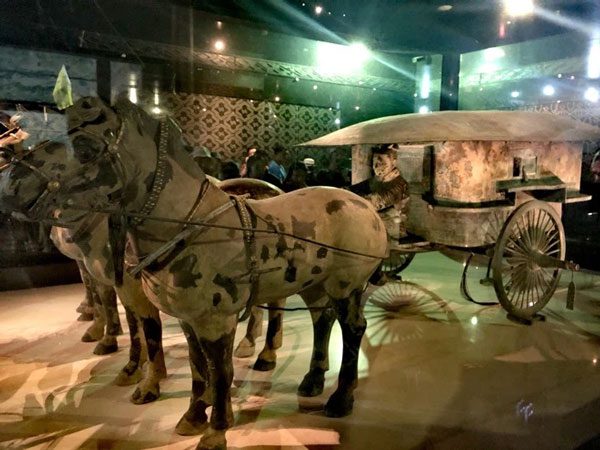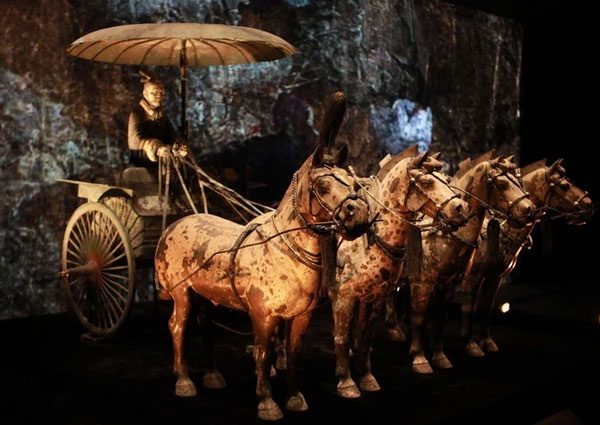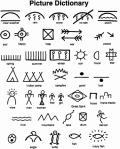One of the most astonishing discoveries in the tomb of Qin Shi Huang, the first emperor of China, is two large bronze chariots.
CCMap.cn, a site dedicated to showcasing Chinese cultural heritage, recently published an article recalling one of the most incredible findings from the tomb of Qin Shi Huang.
In 1980, during an excavation in a burial pit to the west of the Qin Shi Huang tomb, Chinese archaeologists uncovered two large bronze chariots.
These chariots were shattered into 3,000 pieces, but fortunately, all the fragments remained intact in one location, untouched and unpilfered.

This chariot is likened to a luxury sleeper car. The design is versatile and convenient.
It took a total of eight years to restore the two chariots to their complete form before they were displayed in a museum.
The main body of both chariots is made of bronze, with some components crafted from gold and silver. Each part was cast separately and then assembled from multiple pieces.
The horses pulling the chariots are white, created from a type of mineral powder mixed with a thick adhesive. The size of the chariots is half that of real ones. Remarkably, these chariots were made with extreme detail, realistically mimicking their full-sized counterparts.

The horses are intricately cast.
One chariot was designed for people to sit or stand while moving. The other chariot has a canopy. Both chariots have two wheels with four horses harnessed in front.
According to experts, the first chariot was used for clearing the way, while the second chariot served as a vehicle for royalty, complete with a bed and “air conditioning.” Inside, the chariot features soft cushions embroidered with intricate patterns, known as “wen cushions.” When in motion, those inside could lie down or sit, combining luxury with comfort.
This chariot is compared to a luxury sleeper car with air conditioning, designed for versatility and convenience.
The chariot is equipped with double-hinged windows that can be pushed open and slide horizontally. Over 2,000 years later, when excavated, the windows still functioned smoothly. The outer window has many small holes, while the inner window can be opened and closed. This design creates a special ventilation system and retains warmth inside the chariot, also helping to control the interior temperature.
This chariot not only has a bed and “air conditioning,” but what surprises many is that it also features a dedicated rail system. According to experts, to ensure the chariot ran smoothly and quickly, Qin Shi Huang ordered the construction of a “chariot rail.” This was a rail system specifically for royal chariots.
In fact, in Nanyang, Henan Province (China), experts discovered traces of the “chariot rail” from the Qin Dynasty. Remarkably, wooden rails and ties remain intact. Thanks to these rails, the chariots ran more smoothly, and the ties forced the horses to run at high speeds, as the distance between the ties corresponded to the horse’s stride. Thus, once the horses hit the rail, they would automatically gallop quickly until reaching a designated stop.
The components of the chariots were made with incredible precision, appearing lifelike. Even the items on the chariot, decorative elements on the horse, and the statues clearly conveyed their intended purposes.
The painting technique on bronze items demonstrated a breakthrough for artisans during the Qin era compared to the Zhou Dynasty and the Spring and Autumn period.

The bronze chariot found in the tomb of Qin Shi Huang. This chariot was used for clearing the way.
The two bronze chariots in the tomb of Qin Shi Huang are regarded by the Chinese government as a national-level heritage site. They are displayed in the Qin Shi Huang mausoleum museum and are classified as artifacts prohibited from being taken abroad.
According to CCMap.cn, the bronze chariots from the Qin Dynasty are the largest, most complex, and most complete chariots ever excavated in Chinese history.





















































